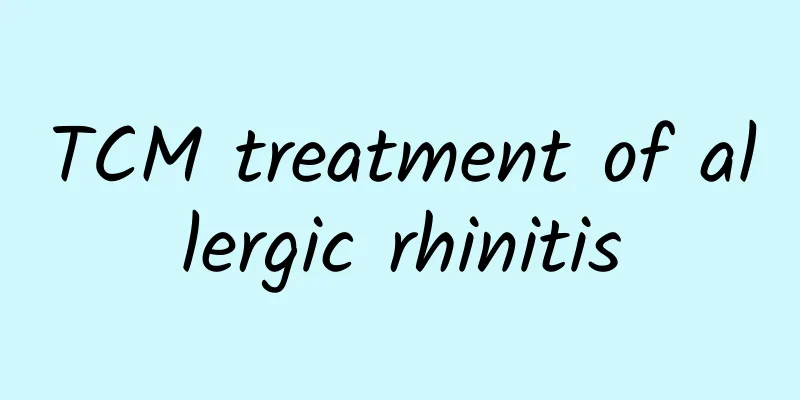How to treat purpura nephritis? Teach you the commonly used clinical treatment methods

|
Purpura nephritis is one of the common types of nephritis. In clinical practice, people can refer to the following methods when treating purpura nephritis. Treatment principles The treatment plan for purpuric nephritis should be selected according to the patient's age, clinical manifestations and degree of renal damage. Actively control immune inflammatory responses, inhibit glomerular mesangial proliferative lesions, and prevent and delay the formation of chronic renal fibrosis. General treatment During the active period of the disease, you should pay attention to rest and maintain water and electrolyte balance. Patients with edema and heavy proteinuria should be given a low-salt diet, limit water intake, and avoid high-protein foods. To prevent recurrence of purpura and aggravate kidney damage, attention should be paid to preventing upper respiratory tract infections, clearing chronic infection lesions (such as chronic tonsillitis and pharyngitis), actively looking for possible allergens, and avoiding re-contact. Drug treatment (1) Isolated hematuria or pathological grade I: Only Henoch-Schonlein purpura is treated accordingly, and there is currently no literature report on the definite efficacy of microscopic hematuria. Changes in the condition should be closely monitored, and follow-up for at least 3-5 years is recommended. (2) Isolated proteinuria, hematuria and proteinuria or pathological grade IIa: Angiotensin converting enzyme inhibitors (ACEI) and/or angiotensin receptor blockers (ARB) have the effect of reducing proteinuria. Tripterygium wilfordii polyglycosides 1 mg/(kg·d), taken orally in 3 divided doses, with the daily dose not exceeding 60 mg, for 3 months. However, attention should be paid to its side effects such as gastrointestinal reactions, liver damage, bone marrow suppression and possible gonadal damage. (3) Non-nephrotic proteinuria or pathological grade II b or IIIa: Take 1 mg/(kg·d) of tripterygium wilfordii glycosides orally in 3 divided doses. The maximum daily dose should not exceed 60 mg. The course of treatment is 3 to 6 months. Or hormone combined with immunosuppressant therapy, such as hormone combined with cyclophosphamide, combined with cyclosporine A or tacrolimus treatment. (4) Nephrotic syndrome or pathological grade IIIb or IV: The clinical symptoms and pathological damage of this group are relatively severe, and the current treatment method is mostly hormone combined with immunosuppressants. Among them, the most effective treatment is glucocorticoid combined with cyclophosphamide (CTX). If the clinical symptoms are severe, the pathology is diffuse or accompanied by crescent formation, methylprednisolone pulse therapy can be used, 15-30 mg/(kg·d) or 1000 mg/(1.73 m2·d), with the maximum daily dose not exceeding 1 g, and pulse therapy should be given every day or every other day, with 3 times as a course of treatment. The dose of CTX is 0.75-1.0 g/m2 intravenous drip once a month. After 6 consecutive months, it is changed to intravenous drip once every 3 months. The total amount generally does not exceed 8 g. In case of renal insufficiency, the CTX dose should be halved. Other treatment options include hormones combined with tacrolimus, hormones combined with mycophenolate mofetil, hormones combined with azathioprine, etc. (5) Rapidly progressive nephritis or pathological grade IV or V: This type of clinical symptoms is severe and the disease progresses rapidly. Currently, triple to quadruple therapy is often used. The commonly used regimen is: methylprednisolone pulse therapy for 1-2 courses, followed by oral prednisone + cyclophosphamide (or other immunosuppressants) + heparin + dipyridamole. There are also literature reports on treatment with methylprednisolone combined with urokinase pulse therapy + oral prednisone + cyclophosphamide + warfarin + dipyridamole. |
>>: What should we pay attention to when we have chronic pharyngitis?
Recommend
Self-regulation methods for anxiety disorders
If you have anxiety disorder, don't panic. Yo...
How to treat retinitis pigmentosa effectively
Retinitis pigmentosa is a relatively serious eye ...
Symptoms of mixed hemorrhoids
Mixed hemorrhoids, also known as external hemorrh...
I feel weak all over and want to sleep recently
Many times, our bodies may feel weak or we may al...
Cough, phlegm, chest tightness and shortness of breath? How to treat a cough?
Coughing is a common physiological symptom. Some ...
Pigmented birthmarks
Through understanding, I realized that some forei...
What are the symptoms of thumb tenosynovitis
Common symptoms of thumb tenosynovitis include pa...
How to deal with swollen lips
Blistering and swelling of the lips are quite com...
Fu Shuliang Instructions
Many people don’t really know what Fushunliang is...
Good prescription for treating damp-heat in traditional Chinese medicine
Dampness and heat are what we often call evil dam...
I have stomach pain on the right side when I run
Nowadays, many people like to run, but sometimes ...
How to reduce menopausal symptoms?
Menopause is not exclusive to female friends. Men...
Dry skin on face after pregnancy
The particularly dry skin on the face after pregn...
The efficacy and function of wintersweet seeds
Wintersweet flowers are warm in nature and sweet ...
Treatment methods for follicular pharyngitis, Chinese medicine has methods for treatment
Follicular pharyngitis is as common as a cold, wi...









